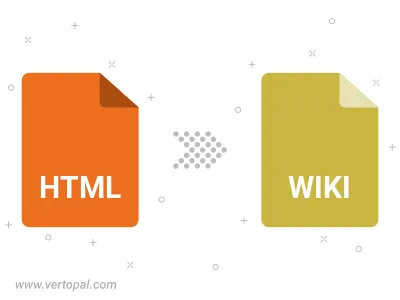Convert HTML to WIKI TWIKI
Convert HTML documents to WIKI TWIKI format, edit and optimize documents online and free.

The HTML (Hypertext Markup Language) file extension, is a fundamental file format in web development. It structures content on the web through the use of tags to create elements such as headings, paragraphs, links, and images. Originating from Tim Berners-Lee's work at CERN in the early 1990s, HTML has evolved to become the cornerstone of web design and development, facilitating the creation of dynamic and interactive web pages. HTML files are essential for displaying and structuring web content, ensuring a seamless user experience across various browsers and devices.
The TWiki Markup Language (WIKI) file extension is used for documents created with TWiki, an open-source wiki application designed for collaborative documentation and project management. TWiki allows users to format text, and create headings, lists, and tables using simple markup syntax, making it accessible even for those without HTML knowledge. TWiki was developed in the early 2000s and has since been widely adopted for its ease of use and powerful collaboration features.
Select any HTML document you wish to convert by clicking the Choose File button.
Before clicking the Convert button, use any available HTML to WIKI TWIKI tools.
Let the conversion process finish, then download your WIKI TWIKI markup document.

To change HTML format to WIKI TWIKI, upload your HTML file to proceed to the preview page. Use any available tools if you want to edit and manipulate your HTML file. Click on the convert button and wait for the convert to complete. Download the converted WIKI TWIKI file afterward.
Follow steps below if you have installed Vertopal CLI on your macOS system.
cd to HTML file location or include path to your input file.Follow steps below if you have installed Vertopal CLI on your Windows system.
cd to HTML file location or include path to your input file.Follow steps below if you have installed Vertopal CLI on your Linux system.
cd to HTML file location or include path to your input file.